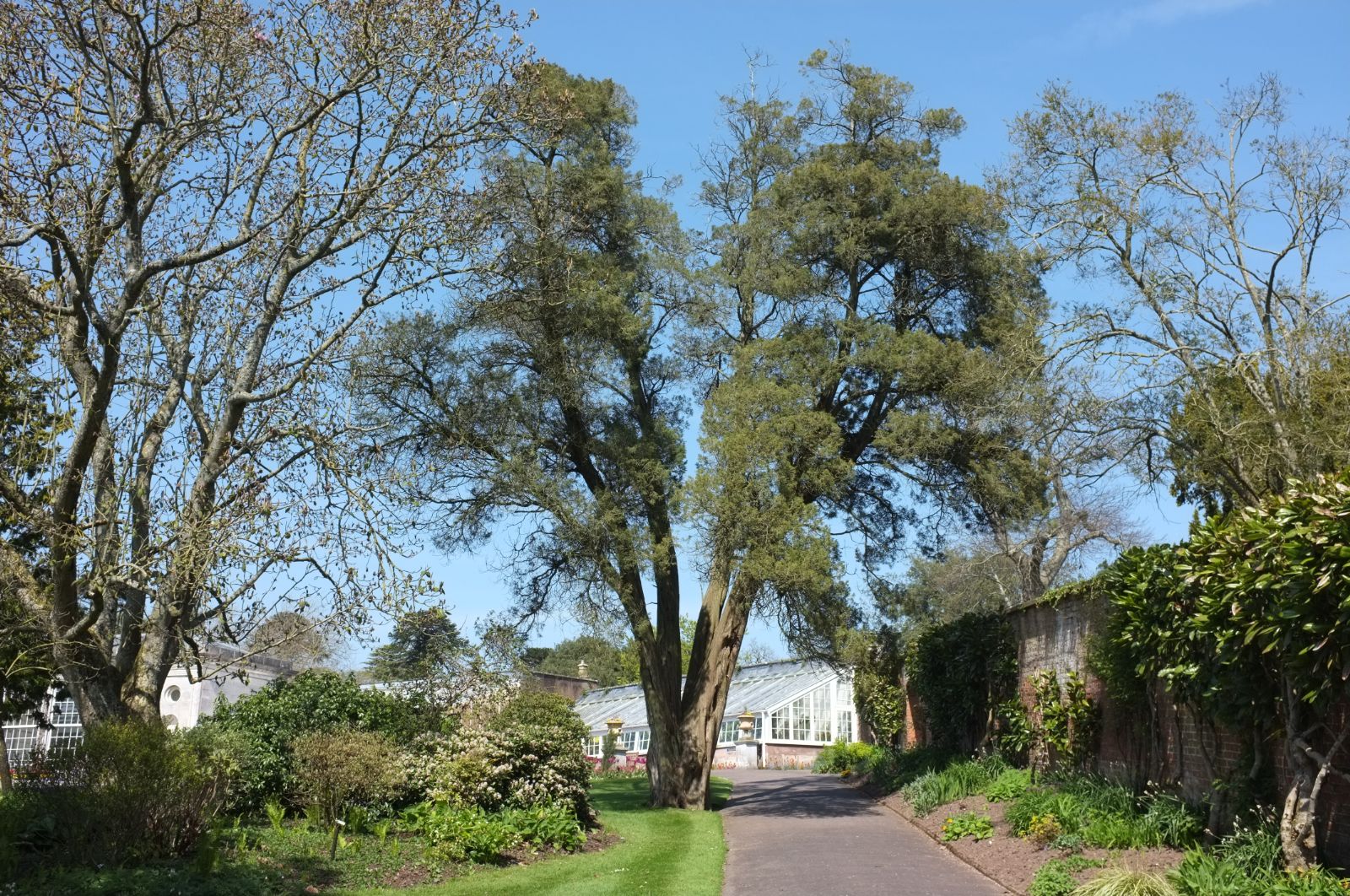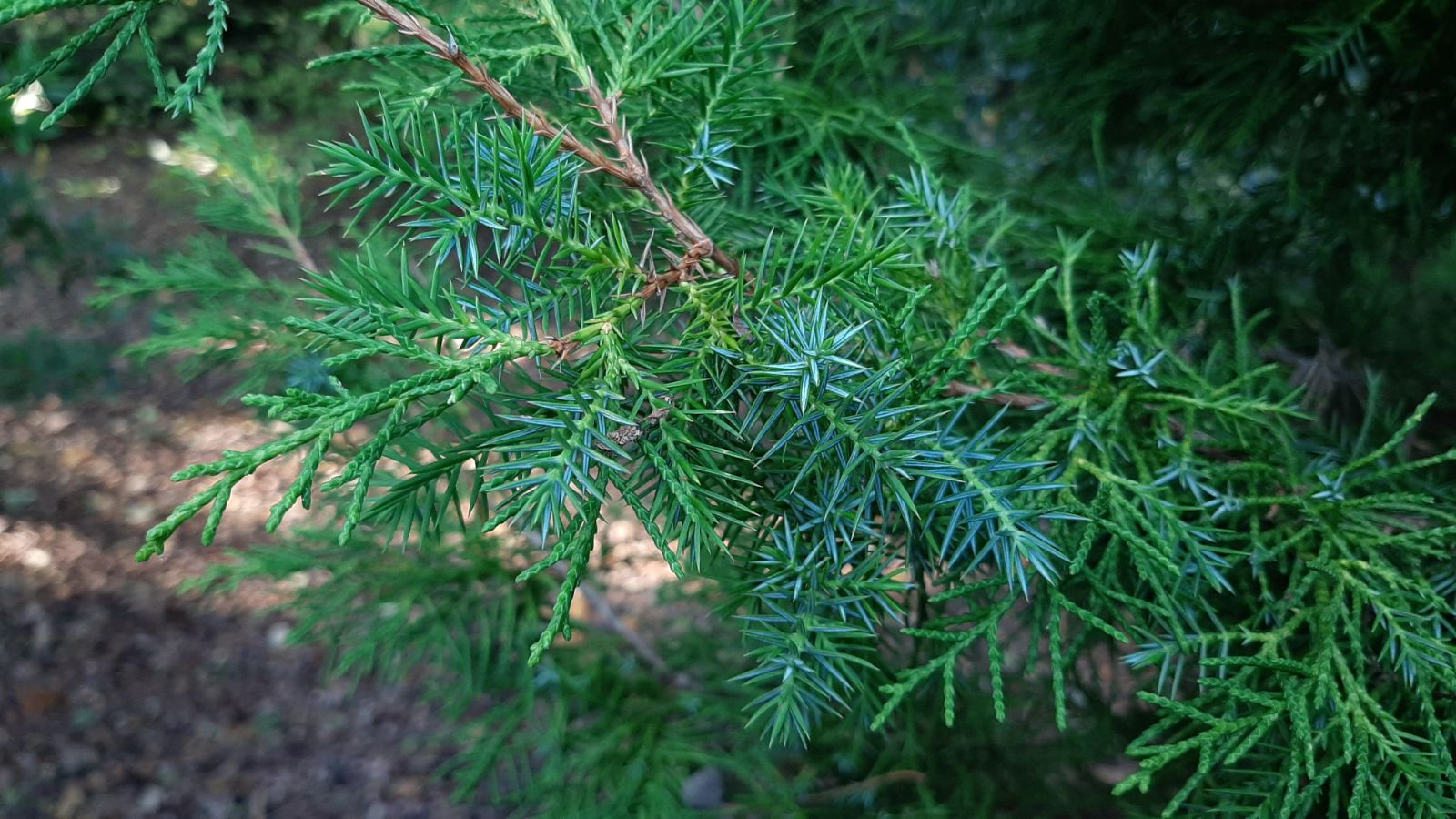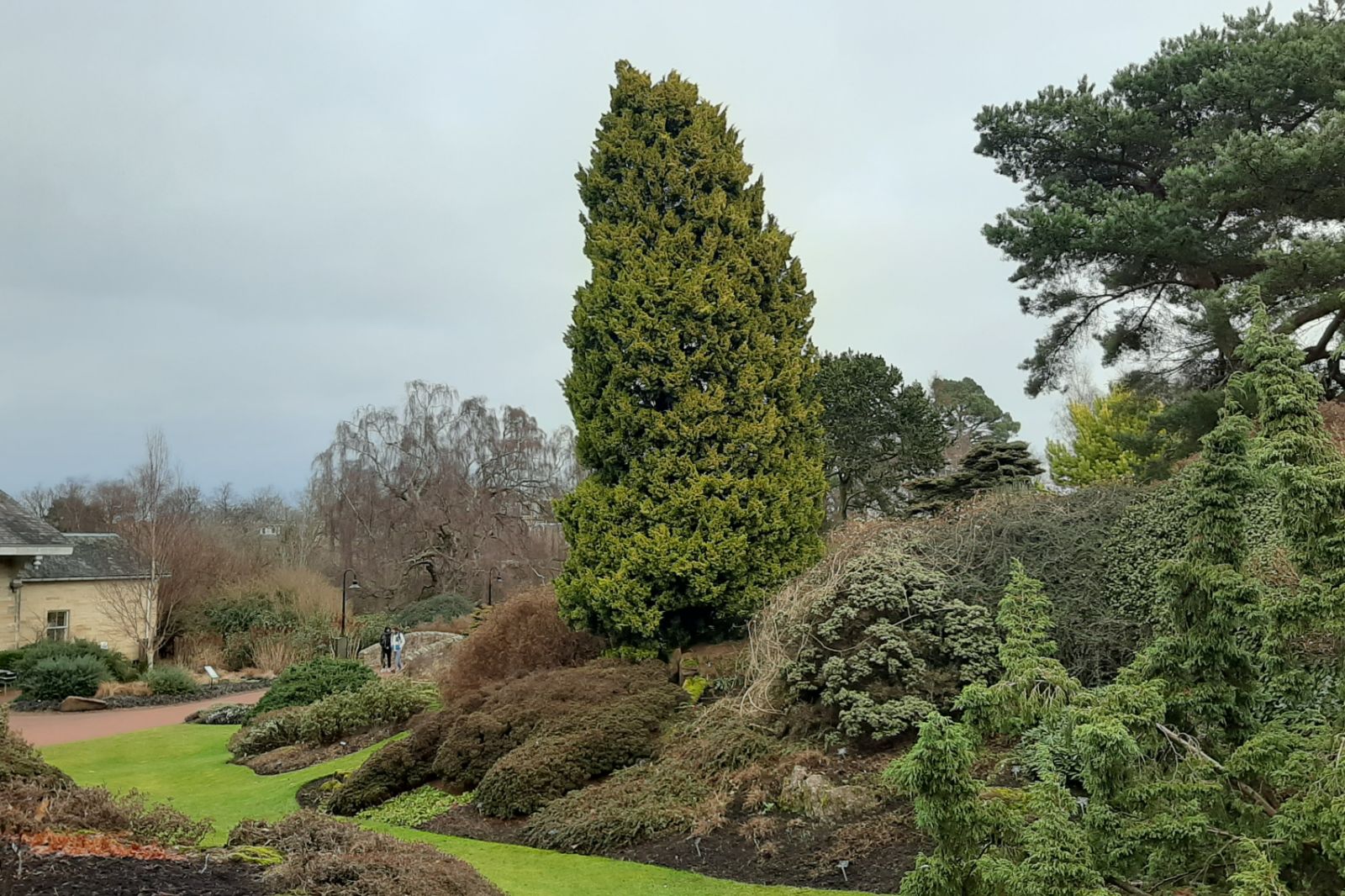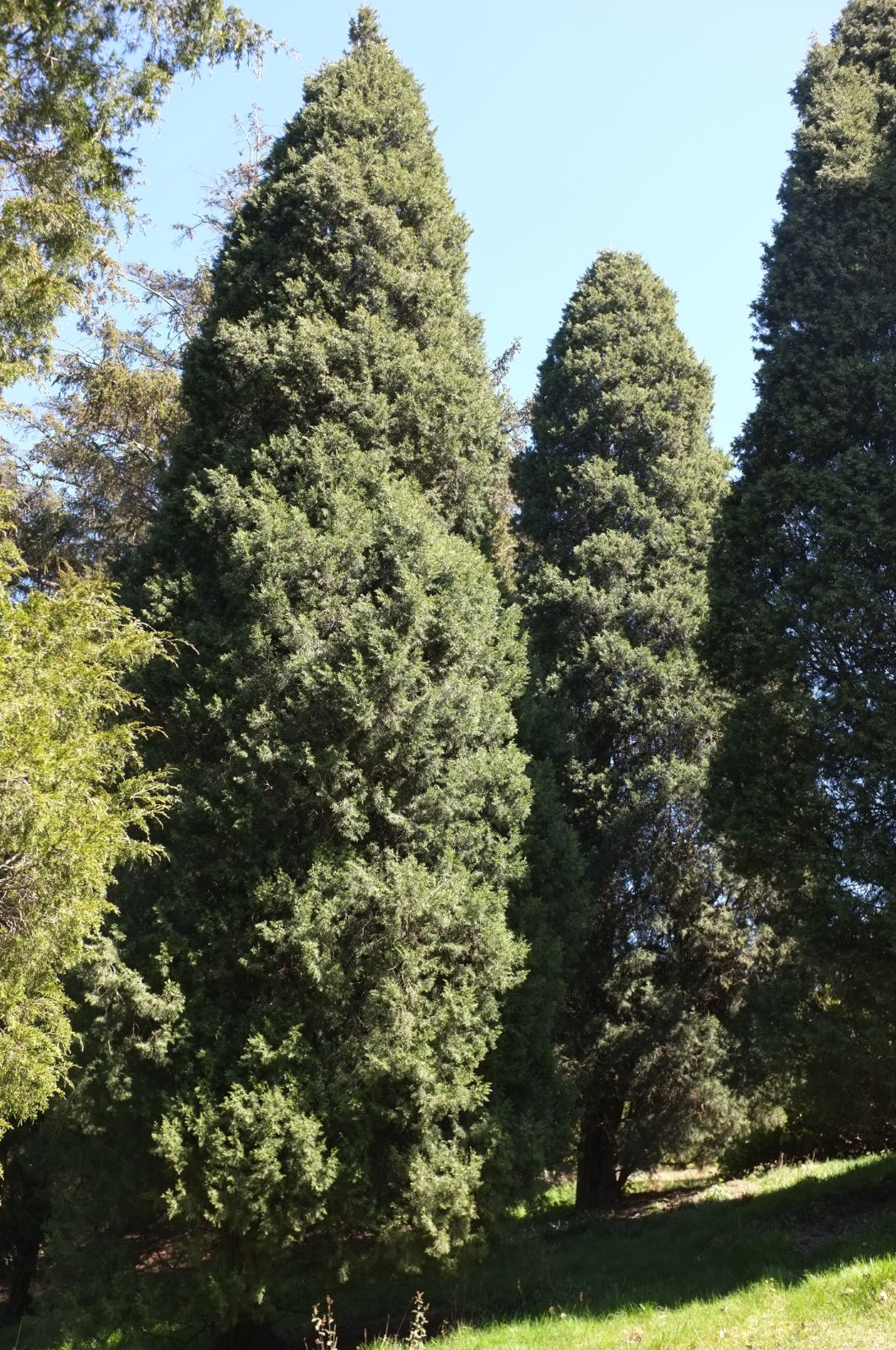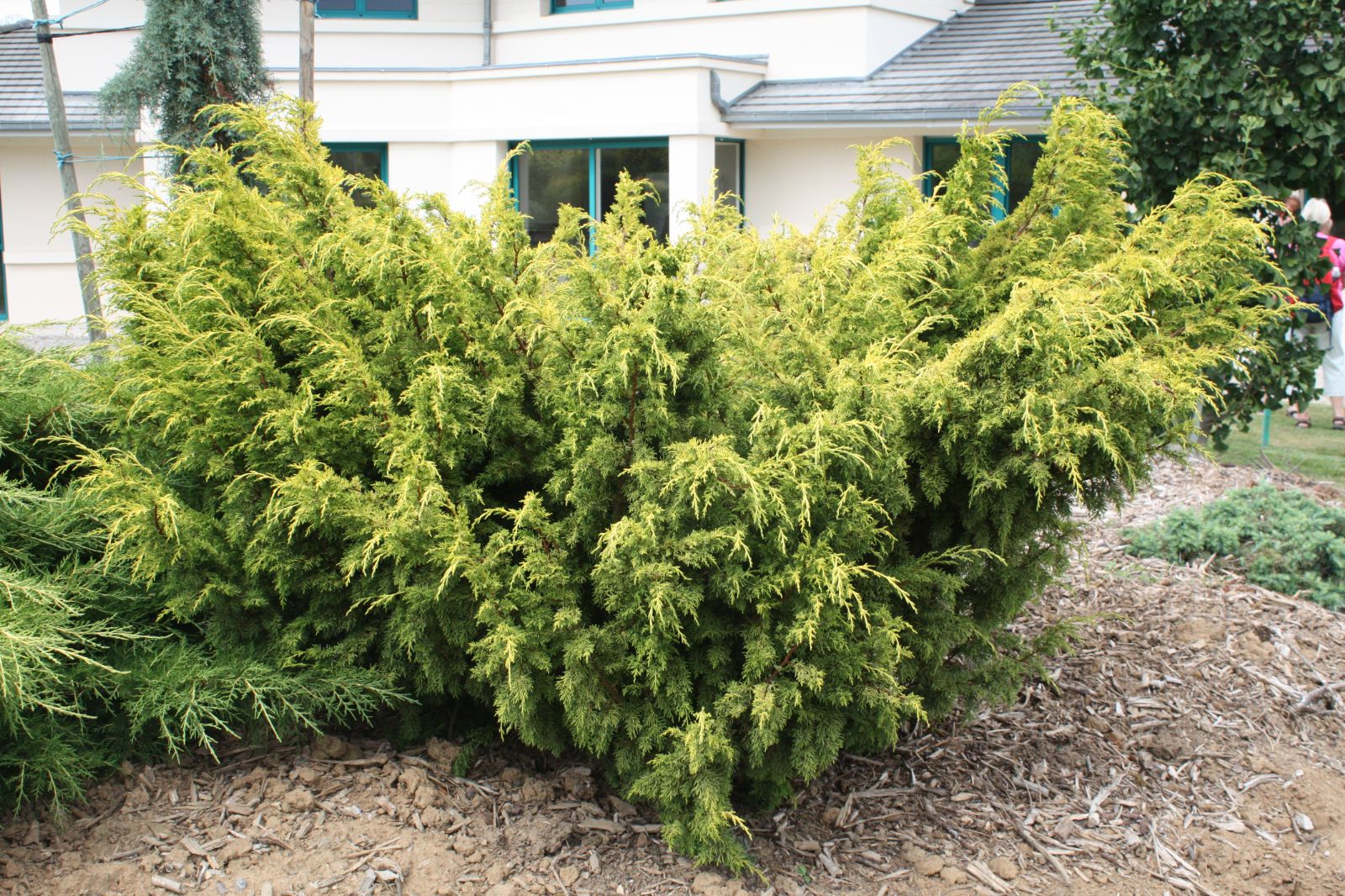Juniperus chinensis
Credits
Article from Bean's Trees and Shrubs Hardy in the British Isles
Recommended citation
'Juniperus chinensis' from the website Trees and Shrubs Online (treesandshrubsonline.
Genus
Synonyms
- J. sphaerica Lindl.
- J. sheppardii (Veitch) Van Melle
- J. × media Van Melle
Infraspecifics
Other taxa in genus
- Juniperus bermudiana
- Juniperus cedrus
- Juniperus communis
- Juniperus conferta
- Juniperus deppeana
- Juniperus drupacea
- Juniperus excelsa
- Juniperus flaccida
- Juniperus foetidissima
- Juniperus formosana
- Juniperus horizontalis
- Juniperus komarovii
- Juniperus occidentalis
- Juniperus oxycedrus
- Juniperus phoenicea
- Juniperus pingii
- Juniperus procera
- Juniperus procumbens
- Juniperus recurva
- Juniperus rigida
- Juniperus sabina
- Juniperus saltuaria
- Juniperus scopulorum
- Juniperus semiglobosa
- Juniperus squamata
- Juniperus thurifera
- Juniperus tibetica
- Juniperus virginiana
- Juniperus wallichiana
A tree up to 60 ft high or a shrub; young shoots terete. Leaves of two types that are nearly always found on the same tree, viz., juvenile awl-shaped ones, and small, scale-like, adult ones. The former are 1⁄4 to 1⁄3 in. long, sharply and stiffly pointed, arranged either in threes or oppositely in pairs, with two glaucous lines on the upper surface, green elsewhere. Scale-like leaves usually in pairs, rarely in threes, closely flattened to the branchlet, 1⁄16 in. long, blunt at the apex. The plants are usually unisexual, and the male flowers, very freely borne in early spring, are yellow and pretty. Fruits about 1⁄4 in. in diameter, roundish or rather top-shaped, whitish with bloom when ripe; seeds two or three, occasionally more.
Native of Japan, Mongolia, and China; introduced to Kew in 1804 by W. Kerr. This juniper and J. virginiana are the commonest of tree-like junipers in gardens. It is perfectly hardy. From J. virginiana it differs in its blunt, scale-like leaves, and in the awl-shaped ones being frequently in whorls of threes. As a rule both juvenile and adult leaves occur on the same tree, but occasionally specimens of good age have nothing but juvenile foliage. There are male trees at Kew which bear flowers in the axils of leaves of the awl-shaped, juvenile type. Although J. chinensis is commonly dioecious, plants with flowers of both sexes occasionally occur.
Van Melle’s controversial treatment of J. chinensis is set out in his book Review of Juniperus chinensis et al., published by the New York Botanical Garden in 1947.
A. F. Mitchell has found that few trees survive of those that were mentioned by Elwes and Henry early this century or even of those listed in the returns to the R.H.S. Conifer Conference of 1933. The largest existing specimens are mostly of poor habit and 50 to 60 ft in height and 31⁄2 to 6 ft in girth.
From the Supplement (Vol. V)
specimens: Nymans, Sussex, 58 × 41⁄4 ft and 54 × 41⁄2 ft (1983); Bedgebury House, Kent, 68 × 83⁄4 ft at 3 ft (1983); Barrington House, Essex, 62 × 53⁄4 ft (1983); Bowood, Wilts., 62 × 51⁄2 ft (1984); Westonbirt, Glos., 68 × 51⁄4 ft (1980); Highnam Pinetum, Glos., 69 × 63⁄4 ft (1984); Eastnor Castle, Heref., 66 × 4 ft (1984); Bicton, Devon, 62 × 53⁄4 ft (1977); Castlehill, Devon, 59 × 6 ft (1983); Stonefield, Argyll, 41 × 5 ft (1981); Denira House, Perths., 56 × 61⁄4 ft (1981); Monteviot, Roxb., 52 × 51⁄4 ft (1983); Caledon, Co. Tyrone, 60 × 61⁄4 ft and 62 × 71⁄2 ft (1983).
† ‘Blue Point’. – Of narrowly conical habit, with blue-grey foliage, which is mostly juvenile on young plants, becoming scale-like with age. Raised in the USA.
‘Japonica’. – This cultivar does not remain dwarf, as stated. In time it throws up branches and becomes a small tree, with an increasing amount of adult foliage (H. Welch, Manual of Dwarf Conifers, pp. 204–6). Welch considers that the cultivar named ‘Kaizuka Variegated’ in the USA is a variegated form of ‘Japonica’ (op. cit. p. 206).
† ‘San José’. – Of procumbent habit, with grey-green foliage, which is wholly juvenile at first, mixed later. The foliage is soft, not prickly as in ‘Japonica’. Raised by W. B. Clarke in California.
Van Melle’s work was mentioned on page 480, second paragraph, and under ‘Pfitzeriana’ on page 481. Resin analysis tends to confirm his hypothesis that ‘Pfitzeriana’ is the result of hybridisation between J. chinensis and J. sabina, though the first-named parent was considered by him to be J. sphaerica, usually included in J. chinensis. His name for this hybrid – J. × media – is now fairly widely accepted, and it is in any case convenient to keep the cultivars concerned under a separate heading. The following are the most important members of the group:
† ‘Armstrongii’. – A sport of ‘Pfitzeriana’, lower and more compact in growth.
† ‘Gold Coast’. – This is very similar to ‘Old Gold’ and of equal merit, but slightly more compact in growth. Raised in the USA.
‘Hetzii’. – This is more erect in growth than ‘Pfitzeriana’, eventually becoming a very large shrub, and with grey foliage.
† ‘Kuriwao Gold’. – Leaves light green with a golden midrib. Branches ascending, forming a fairly dense, roundish mound to about 5 ft high and 3 ft wide. Raised in New Zealand. In the Boskoop Trial ‘Old Gold’ was considered superior to this.
‘Old Gold’. – Mentioned briefly under ‘Pfitzeriana’, this is a dense shrub under 3 ft high, more in width, all the foliage golden in summer, bronze-yellow in winter. Raised in Holland.
† ‘Mint Julep’. – A dense shrub to about 6 ft high, slightly more in width, with bright green foliage. A recent introduction from the USA. In the report on the Boskoop trials (Dendroflora, loc. cit.), Mr Van Gelderen remarks that it is very near to J. sabina.
‘Pfitzeriana’. – See page 481. It should be noted that the spelling used is correct, not ‘Pfitzerana’.
‘Pfitzeriana Aurea’. – Of slightly flatter growth than in ‘Pfitzeriana’, the foliage yellow in summer, greening somewhat in winter.
‘Pfitzeriana Compacta’. – A wide-spreading, flat-topped shrub to about 3 ft high. Raised in the USA. The Dutch-raised ‘Mathot’ is reported to be almost identical.
† ‘Ramlösa’. – Branches almost horizontal, wide-spreading. Raised by Holger Jensen’s Ramlösa nursery, Sweden (Dendroflora, loc. cit., p. 22).
‘Plumosa’. – See page 481. This is the original of a subgroup of Van Melle’s J. × media, to which ‘Blaauw’ also belongs.
‘Plumosa Aurea’. – Mentioned under ‘Plumosa’, this is an old inhabitant of gardens, once in the trade as J. chinensis japonica aurea. It is of spreading habit, to about 6 ft high, more in width, its foliage golden when young, bronzing in winter. For the complicated synonymy, see Welch, Manual of Dwarf Conifers, p. 231.
J. davurica – Pallas spelt the specific epithet ‘dauurica’, which correctly should be amended to davurica and not ‘dahurica’, the spelling used in the main work and in the Flora of the Soviet Union.
'Aurea'
Common Names
Young's Golden Juniper
The whole of the young parts of this plant are golden yellow, very striking in summer. Raised in Young’s nursery at Milford, in Surrey; of rather dense, slender form. The colouring of this variety comes mainly from the adult foliage, which predominates; the juvenile leaves are paler.
'Blaauw'
Resembling ‘Plumosa’ but more erect and with bluish grey foliage. Introduced from Japan by J. Blaauw & Co. of Holland c. 1924 (Den Ouden and Boom, Man. Cult. Conif. (1965), p. 149). ‘Globosa Cinerea’, distributed by Messrs Wallace as “J. virginalis globosa, grey form”, and renamed by Hornibrook, is very similar; it was also imported from Japan, before 1916.'Columnaris'
Of slender columnar habit. Leaves mostly awl-shaped, deep green. A selection from plants raised from seeds collected by F. N. Meyer in Hupeh, China, in 1905. ‘Columnaris Glauca’ is similar but with glaucous foliage (Den Ouden and Boom, Man. Cult. Conif. (1965), p. 150).'Femina'
A small tree with rather lax branches. Leaves scale-like, closely appressed. Fruits small, with a vivid blue bloom. The plants grown under this name are probably a clone descended from the plant introduced from China in 1839 by J. R. Reeves as J. flagelliformis and also known as J. reevesiana.J dahurica Pall
A procumbent shrub with prostrate or at least horizontally spreading very stout main branches and erect secondary branches. Leaves mainly awl-shaped and spreading, but often scale-like, especially at the ends of the shoots, the scale-leaves rhombic, sharply pointed. Fruits about {3/16} in. wide, globular, dark brown with a greyish bloom. Seeds two to four. A native of the Russian Far East, from Transbaikalia eastward to the Ussuri region, in rocky places in the mountains, and of N. Mongolia; closely allied to J. chinensis. It was introduced to Britain in 1791 but probably all the plants now cultivated in Europe and America descend from a later introduction by Parsons’ nurseries, Flushing, USA. These show well the very stout main branches mentioned by Pallas in his original description, but according to Van Melle (op. cit., p. 37) it differs from the ‘type’ in its fruits; he suggests that it may have been raised from seeds collected in Korea. The Parsons juniper is generally known as J. chinensis var. parsonsii Hornibr. (J. dahurica var. parsonsii (Hornibr.) Van Melle), or as J. chinensis ‘Expansa’.'Japonica'
This has become the established name for what is probably a clone, characterised by very stiff, sharp, glaucous juvenile leaves; such leaves predominate, but on old plants the terminal branchlets bear some adult, scalelike foliage. It grows to a few feet high. This juniper is probably the same as the one described by Carrière in 1855 as J. japonica and said by him to have been introduced to Europe in 1840. But the epithet japonica has been used for other forms of J. chinensis imported from Japan. See ‘Plumosa’.'Kaizuka'
Main stem and branches slanting; branchlets clustered. Leaves scale-like, vivid green. Female. A very picturesque large shrub (or an irregularly branched tree if the leader is trained). It is also known as J. chinensis var. torulosa Bailey (J. sheppardii var torulosa (Bailey) Van Melle).'Keteleeri'
Of columnar habit. Leaves scale-like, very pointed. Free-fruiting. It is sometimes placed under J. virginiana. Van Melle refers it to J. sphaerica and notes it is well matched by a specimen collected by Henry in northern Hupeh.
'Pfitzerana'
A medium-sized shrub with arching branches spreading at an angle of about 450 to the horizontal, eventually becoming about 8 ft high and flat-topped. Taller specimens can be obtained by training and pruning when the plant is young. Leaves mainly appressed and sharply pointed (not at all like the true adult leaves of J. chinensis); others acicular and spreading, both kinds occurring together in the same spray. This juniper is now much valued as an architectural plant, but was little known before the second world war. It was put into commerce by Späth’s nurseries in 1899 but he had received the original plant as J. chinensis var. pendula many years earlier.Van Melle considers that this juniper is J. chinensis × sabina (J. × media Van Melle). He states that similar plants have been found recently in the Ho Lang Shan range of Mongolia and suggests that ‘Pfitzerana’ may have originally been introduced from there by the French missionary David around 1866. It should be added that ‘Pfitzerana’ is a tetraploid (Journ. Arn. Arb., Vol. 14 (1933), p. 369).Clones resembling ‘Pfitzerana’ in botanical characters are: ‘Pfitzerana Aurea’, with golden sprays; ‘Old Gold’, denser and more golden than the preceding; ‘Hetzii’, a vigorous shrub with glaucous foliage.'Plumosa'
Branches spreading; branchlets short, with dense, drooping sprays. Leaves mostly scale-like. This cultivar was at one time distributed as J. japonica or J. chinensis var. japonica, but it is not the J. japonica of Carrière (see ‘Japonica’). It attains a height of about 3 ft, but more in spread. ‘Plumosa Aurea’ is somewhat more erect and has the foliage green-gold at first, later bronze-gold. There are two variegated cultivars in this group – ‘Plumosa Albovariegata’ and ‘Plumosa Aureovariegata’.
var. sargentii Henry
Synonyms
J. sargentii (Henry) Takeda
J. procumbens Sarg., not Sieb

